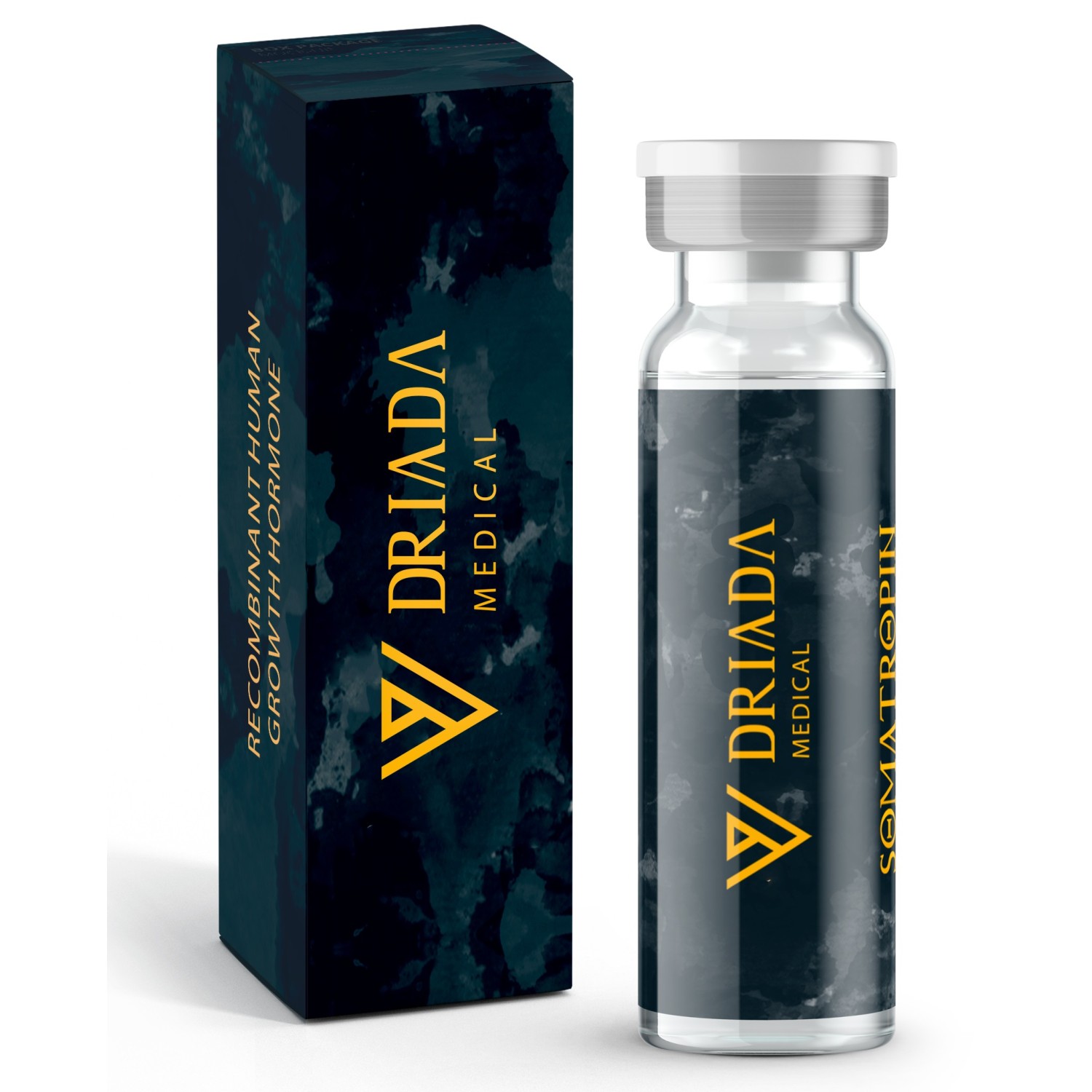









- Stock: In Stock
- Package: 50 iu
Exploring Growth Hormone
Growth hormone, also known as somatotropin, is a peptide hormone produced by the anterior pituitary gland. It plays a crucial role in protein synthesis, manages carbohydrate metabolism, aids tissue repair post-injury, and contributes to the function of various systems and organs. This hormone is essential for promoting growth, cell division, and rejuvenation in both humans and animals, and is vital for overall human development.
Essential for regulating the growth of bodily organs and tissues, growth hormone stimulates bone development, manages the metabolism of fats, carbohydrates, nitrogen, and minerals, and maintains electrolyte balance. It promotes the breakdown of fats in fat cells, increases amino acid absorption, and enhances nitrogen retention in muscles, which supports muscle mass and strength. Growth hormone also controls the production of insulin-like growth factor 1 (IGF-1), predominantly in the liver, which plays a significant role in body growth and metabolic activities.
During growth phases, the body produces high levels of growth hormone, enabling development and maturation from infancy through adulthood. The highest secretion levels of somatotropin are seen in early childhood and adolescence, with a gradual decrease starting around age 25.
This hormone is prized for its ability to increase muscle mass, demonstrating both anabolic and anti-catabolic effects through heightened protein synthesis and reduced protein breakdown. It effectively reduces body fat, particularly noticeable during physical activities, making it highly valued among athletes.
Growth hormone also regulates carbohydrate metabolism by counteracting insulin, increasing blood glucose levels that the body then utilizes as energy during physical exertion. Additionally, it supports bone health by promoting calcium absorption and prevents osteoporosis, particularly during physical activities.
Functions of Growth Hormone
Growth hormone indirectly influences bodily functions through its role in IGF-1 synthesis, though it also has direct actions by interacting with specific receptors on cells.
Direct effects of growth hormone apart from IGF-1 mediation:
- Encourages fat breakdown into fatty acids
- Enhances cell membrane permeability to various amino acids, aiding in cellular construction
- Improves calcium retention, strengthening bones
- Boosts immune function
- Facilitates the conversion of thyroxine (T4) to triiodothyronine (T3)
- Increases blood sugar levels
Role in IGF-1 Synthesis
While some effects of growth hormone are direct, many are mediated by IGF-1, produced in the liver under the influence of somatotropin. This process is critical for the growth of most internal organs and numerous benefits associated with growth hormone in sports.
- Boosts antioxidant levels
- Combats inflammation
- Supports balanced blood sugar and electrolyte levels
- Helps prevent heart disease
- Enhances brain function, aiding in recovery from strokes
- Stimulates muscle growth
- Speeds up healing by increasing collagen production
- Strengthens bones by enhancing calcium retention
Applications of Growth Hormone
Enhancing Ligament and Joint Strength
Particularly useful in powerlifting and similar sports, growth hormone significantly shortens recovery times for athletes from joint-ligament injuries, making it popular in sports requiring resilience against frequent physical impacts.
Boosting Explosive Power
Growth hormone is also employed to enhance speed and explosive strength, especially in sports demanding quick and powerful movements.
Building Muscle Mass
By inhibiting amino acid oxidation and boosting protein synthesis, growth hormone substantially increases muscle mass, which is further enhanced by anabolic steroids and IGF-1.
Facilitating Fat Loss
Known for its significant lipolytic effect, growth hormone is extensively used by bodybuilders and those aiming for a well-toned physique.
Anti-Aging Benefits
Growth hormone is also used in anti-aging treatments to counteract various aging-related conditions, from poor skin texture to increased abdominal fat and bone density reduction.
Recommended Dosages for Liquid Growth Hormone
- Anti-aging: 1-1.5 IU/day
- Joint and ligament strengthening, post-injury recovery: 2-3 IU/day
- Performance recovery: 3-4 IU/day
- Fat reduction: 3-6 IU/day
- Muscle mass increase: 6-12 IU/day
Risks and Contraindications
- Cardiovascular issues
- Cancer
- Type 2 diabetes
Potential Side Effects
Growth hormone is generally safe when used as directed, but some common side effects include fluid retention, increased blood pressure, and potential impacts on blood sugar levels.
- Carpal tunnel syndrome
- Fluid retention
- Raised blood pressure
- Thyroid function suppression
- Hyperglycemia
- Joint pain
Handling Liquid HGH
The liquid form of growth hormone is ready for use right out of the vial, offering ease of use with minimal handling. Its production avoids the more harmful stages of lyophilization, enhancing stability and efficacy.
This form is stable at room temperature for over 40 days and has a longer shelf life when refrigerated properly.
Considerations for Freezing
Proper storage is crucial; incorrect temperatures, such as freezing, can degrade growth hormone quality.
Frequently Asked Questions
Is post cycle therapy required after using HGH?
No post cycle therapy is needed as growth hormone does not affect sex hormone levels.
Are HGH injections painful?
HGH is typically administered with a small, thin needle, making the injections virtually painless.
Benefits of HGH for women
Women are increasingly using HGH for its anti-aging and weight-loss properties, helping improve skin elasticity, body fat composition, and overall vitality.
What to expect from using Growth Hormone?
Growth hormone is celebrated in sports for its ability to decrease body fat and increase lean muscle mass, among other benefits.
Combining Growth Hormone with Anabolic Steroids
When used in conjunction with anabolic steroids, growth hormone can enhance their effects, making it a popular choice among bodybuilders.








